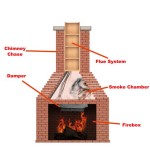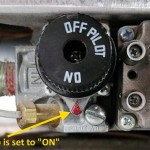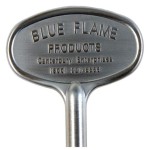Understanding Fireplace Remote Controls: Functionality, Types, and Troubleshooting
Fireplace remote controls have become an increasingly common feature in modern homes, offering convenience and enhanced control over gas and electric fireplaces. These devices allow users to adjust flame height, temperature, and even turn the fireplace on or off from a distance, eliminating the need for manual adjustments. Understanding the functionality, types, and potential issues associated with fireplace remote controls is crucial for homeowners seeking to maximize their fireplace experience and ensure its safe and efficient operation.
The primary function of a fireplace remote control is to wirelessly communicate with the fireplace's control module. This module, typically located within the fireplace unit, receives signals from the remote and executes the corresponding commands. These commands can range from simple on/off operations to more complex adjustments like modulating the flame or controlling a built-in fan. The technology underpinning this communication varies depending on the type of remote control and fireplace model.
Types of Fireplace Remote Controls
Several types of fireplace remote controls are available, each employing different communication protocols and offering varying levels of functionality. Understanding these different types is essential when selecting a remote control or troubleshooting issues.
On/Off Remote Controls: These are the most basic type of fireplace remote. They provide a simple on/off switch functionality. These remotes are typically used with gas fireplaces that have a standing pilot light or an electronic ignition system. They are often the most affordable option and suitable for simple fireplace setups.
Thermostatic Remote Controls: These remotes go beyond simple on/off functionality, allowing users to set a desired room temperature. The fireplace will automatically turn on and off to maintain the set temperature, providing a more consistent and comfortable heating experience. Thermostatic remotes usually have a temperature sensor built into the remote control itself or a separate sensor that communicates with the remote. The fireplace control module monitors the ambient temperature and adjusts the flame height or fan speed to maintain the desired setting.
Modulating Remote Controls: This type of remote offers users granular control over the flame height of the fireplace. This enables precise adjustments to the heat output and aesthetic appearance of the flame. These remotes usually use a series of buttons or a dial to control the flame height, allowing for fine-tuning of the fireplace's performance. Modulating remotes often integrate with more sophisticated gas valve systems within the fireplace.
Timer Remote Controls: Timer remotes offer the ability to program the fireplace to turn on and off at specified times. This feature is particularly useful for homeowners who want to pre-heat a room before arriving home or to ensure the fireplace turns off automatically after a certain period. These remotes often feature a digital display and programming interface.
Smart Home Integration: Modern fireplace remote controls are increasingly incorporating smart home integration capabilities. This allows users to control their fireplaces via smartphone apps, voice assistants like Amazon Alexa or Google Assistant, or other smart home devices. Smart home integration provides even greater convenience and control, enabling users to manage their fireplaces remotely from anywhere with an internet connection. These remotes often use Wi-Fi or Bluetooth connectivity to interface with smart home networks.
The choice of remote control depends on the user's needs and the features supported by the fireplace unit. Compatibility is a key consideration when selecting a remote control. Ensuring the remote is compatible with the fireplace's control module is critical for proper operation.
Common Issues and Troubleshooting
Despite their convenience, fireplace remote controls can experience various issues that may prevent them from functioning correctly. Understanding common problems and troubleshooting steps can help homeowners resolve many of these issues without professional assistance.
Battery Issues: The most common cause of remote control malfunction is depleted or improperly installed batteries. Ensure the batteries are fresh and correctly oriented in the remote. Low battery power can lead to intermittent or unreliable operation. Replacing the batteries is often the first and simplest troubleshooting step.
Interference: Radio frequency (RF) interference from other electronic devices can disrupt the signal between the remote and the fireplace control module. Common sources of interference include cordless phones, Wi-Fi routers, and microwave ovens. Try moving these devices away from the fireplace to see if it resolves the issue. Also, ensure that the antenna (if present) on both the remote and the control module is properly positioned.
Remote Control Pairing/Synchronization: In some cases, the remote control may need to be paired or synchronized with the fireplace control module. This process usually involves pressing a specific sequence of buttons on the remote and/or the control module. Refer to the fireplace owner's manual for specific instructions on how to pair or synchronize the remote. Synchronization ensures the remote and receiver are communicating on the same frequency or code.
Control Module Problems: The fireplace control module itself can malfunction, preventing it from receiving signals from the remote. This can be due to damaged components, loose wiring, or power surges. Inspect the wiring connections to the control module to ensure they are secure. If the control module is suspected to be faulty, it may require replacement by a qualified technician.
Pilot Light Issues (Gas Fireplaces): For gas fireplaces with a standing pilot light, a blown-out or malfunctioning pilot light can prevent the fireplace from turning on via the remote control. Ensure the pilot light is lit and functioning correctly. If the pilot light repeatedly goes out, it may indicate a problem with the gas supply or the pilot light assembly.
Sensor Problems: Thermostatic remote controls rely on temperature sensors to maintain the set temperature. If the sensor is faulty or improperly positioned, the fireplace may not regulate the temperature correctly. Ensure the sensor is clean and free from obstructions. If a separate remote sensor is used, confirm it is properly connected and positioned in the room.
Damaged Remote Control: Physical damage to the remote control, such as a cracked case or broken buttons, can affect its functionality. If the remote control is damaged, it may need to be repaired or replaced. Inspect the remote for any visible signs of damage.
Safety Considerations
Operating a fireplace, even with a remote control, requires adherence to safety precautions. Improper use or malfunction can pose safety risks, including fire hazards and carbon monoxide poisoning (for gas fireplaces). Prioritizing safety is paramount when using a fireplace remote control.
Regular Maintenance: Schedule regular inspections and maintenance of the fireplace and its components, including the remote control system. This can help identify potential problems before they become serious safety hazards. A qualified technician should perform inspections and maintenance.
Carbon Monoxide Detectors: Install and maintain working carbon monoxide detectors in the home, especially near the fireplace. These detectors provide an early warning of carbon monoxide buildup, which can be deadly. Replace the batteries in the detectors regularly and test them periodically.
Keep Flammable Materials Away: Keep flammable materials, such as curtains, furniture, and paper, away from the fireplace. A safe distance should be maintained to prevent accidental ignition. Follow the manufacturer's recommendations for minimum clearances.
Supervise Children and Pets: Supervise children and pets when the fireplace is in operation. Ensure they do not play with or tamper with the fireplace or the remote control. A fireplace screen or guard can help prevent accidental burns.
Proper Ventilation: Ensure proper ventilation when operating a gas fireplace. This helps prevent the buildup of carbon monoxide. Open a window or door slightly to allow for fresh air circulation.
Read the Owner's Manual: Thoroughly read and understand the owner's manual for both the fireplace and the remote control. The manual contains important safety information and operating instructions. Follow the manufacturer's recommendations for safe and proper use.
By understanding the functionality, types, common issues, and safety considerations associated with fireplace remote controls, homeowners can enhance their fireplace experience while ensuring safe and efficient operation. Addressing issues promptly and adhering to safety guidelines are crucial for maintaining a functional and safe fireplace system.

Skytech 1001th Thermostat Fireplace Remote Control

20 14 028 Fireplace Remote Control

Gas Fireplace Remotes More Fireplaceremotecontrols Com

Kingsman Fireplaces Egtmrcp Remote Control Ipi Thermostat

Acumen Timer Thermostat Fireplace Remote Control With 9 Foot Wires Com

Skytech 1420t Lcd Timer Fireplace Remote Control

Skytech Fireplace Remote Control

On Off Remote For Vent Free Outdoor Fireplaces Rfprcaf3tx Cedar Creek Fireplace Rcs Gas Grills

Skytech Manual Remote Control With Timer For Gas Logs Fine S

Skytech 3301 Fscrf Timer Thermostat Fireplace Electronic Fan Sd Remote Control








